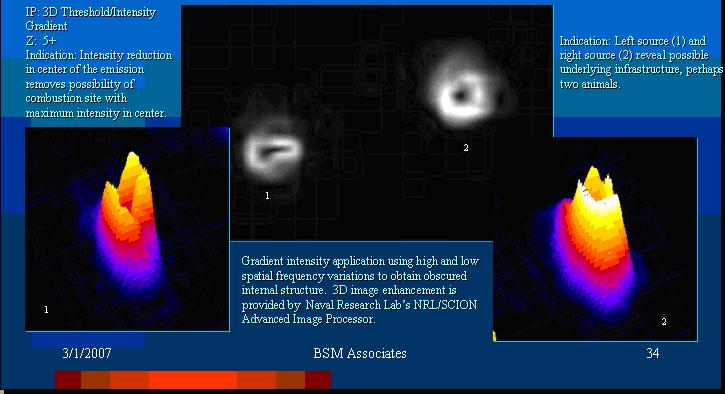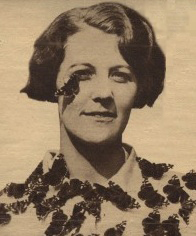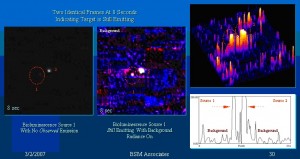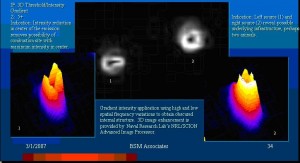By the living-pterosaur author and expert Jonathan D. Whitcomb
Since Paul Nation’s 2006 video recording of two lights on a ridge deep in the mainland of Papua New Guinea, cryptozoologists have a new name for the ropen: “indava.” It’s not that everything about the glowing indava is identical to ropen lights; indeed, the indava seems to glow for many more seconds than the apparently giant ropen that flies between mountains on Umboi Island. But both creatures have been described, by local natives, as giant flying creatures.
Evelyn Cheesman appeared to have no thought about pterosaurs when she observed the strange glowing objects that flew near the top of a mountain ridge. The British entomologist would surely have been interested in the explanation of “large flying animal” if the local villagers had said anything; but they were reluctant to talk about the lights. Nevertheless, Cheeman wrote about the mystery in her book, The Two Roads of Papua (published in 1935). Her observations were a few mountains to the north of Paul Nation’s later observations. She probably never dreamed that those flying lights were the bioluminescence of large flying creatures that were not classified in Western science.
Since the Cheesman lights were so close to the area where native village call flying lights indava, it’s quite likely that they are of the same species of flying creature. The ropen of Umboi Island, however, may be a related species or the same species but a pterosaur that has a different habit in the use of its intrinsic bioluminescent capacity.
By the way, Paul Nation never saw the form or features of the flying lights he videotaped late in 2006 on the mainland of Papua New Guinea. His video footage, however, was later analyzed by the missile defense physicist Clifford Paiva, and found to be quite unusual. The lights were not a paste-on hoax. Neither were they from common sources:
- Not meteors
- Not camp fires
- Not flash lights
- Not car headlights
- Not airplane lights
.

One of the images from Paiva’s analysis of the indava-lights video footage
.

The British biologist and explorer Evelyn Cheesman
.
Other Books on Modern Living Pterosaurs
You probably won’t find the phrase “living pterosaur” in Cheesman’s book The Two Roads of Papua; you’re more likely to find a ropen in the middle of the day, taking a sun bath in your backyard. But other nonfiction books do mention modern pterosaurs, and the following are just a sample:
- Searching for Ropens and Finding God – with much about the expeditions on Umboi Island
- Big Bird – mostly about strange flying creatures in Texas
- Bird From Hell – living pterosaurs in one area of British Columbia, Canada
- Live Pterosaurs in America – sightings in many states of the USA
###
 The video footage obtained by Paul Nation, (late-2006 expedition, Papua New Guinea) was analyzed by the physicist Cliff Paiva (BSM Associates, California). The mountains where Nation observed the indava lights was just a little south of where Evelyn Cheesman had observed similar strange lights decades earlier.
The video footage obtained by Paul Nation, (late-2006 expedition, Papua New Guinea) was analyzed by the physicist Cliff Paiva (BSM Associates, California). The mountains where Nation observed the indava lights was just a little south of where Evelyn Cheesman had observed similar strange lights decades earlier.




